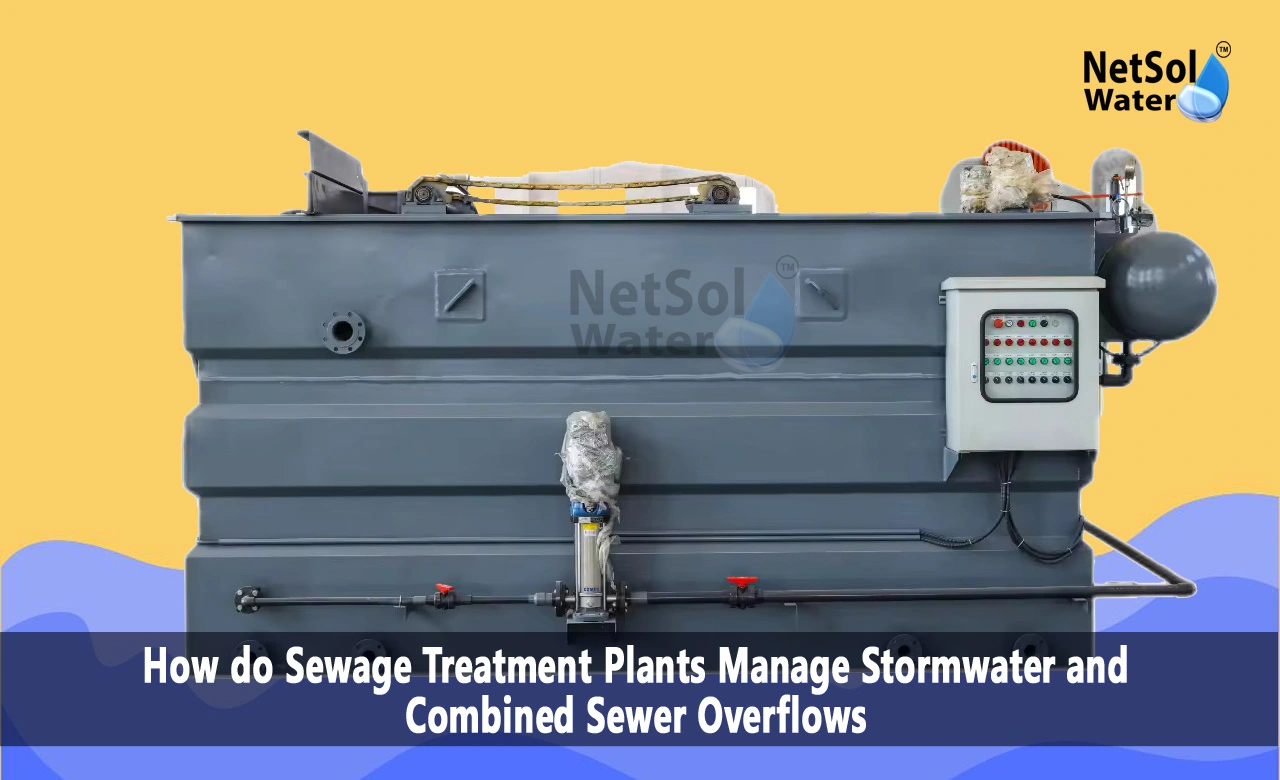How do STP Plants Manage Stormwater and Combined Sewer Overflows?
In many older cities, the sewer systems were originally designed to collect both domestic sewage and runoff from rainstorms and snowmelt in the same set of pipes. Known as combined sewer systems, this infrastructure can become overwhelmed during heavy precipitation events, causing overflows of untreated human waste and stormwater directly into local waterways. These combined sewer overflows (CSOs) release pathogens, suspended solids, toxins, and other pollutants that threaten public health and the environment. As communities work to upgrade ageing infrastructure and reduce CSOs, sewage treatment plants deploy various strategies alongside system improvements to mitigate overflow risks and impacts. We will examines the approaches plants utilise to manage stormwater inputs and CSO events.
Maximising System Conveyance
The first line of defence involves optimising collection system capacities to convey as much combined sewage and stormwater as possible to treatment facilities, even during wet weather. Tactics include:
Storage Tunnels/Basins - Construct large underground storage tunnels and basins that capture and detain combined sewage until rainfall subsides and plants can process the accumulated flows.
Hydraulic Relief - Adjusting pump stations, installing gates, and maximising pipes/interceptor capacities to leverage entire system conveyance during storms.
Green Infrastructure - Integrating permeable surfaces, rain gardens, urban forestry, and other nature-based solutions to reduce stormwater runoff entering sewers.
Combined with enhancing treatment plant wet weather capacities, these system optimisations enable municipalities to minimise CSOs across more precipitation events.
Satellite Treatment for Overflows
When extreme deluges exceed even optimised system conveyance capabilities, sewage plants deploy smaller-scale but rapidly responding treatment technologies to treat unavoidable CSO discharges partially:
Vortex Separators - Hydrodynamic vortex separators remove and concentrate solids for processing as overflows pass through.
Disinfection - Injecting liquid chlorine, sodium hypochlorite, or UV radiation disinfects pathogens before overflows reach waterways.
Screening/Settling - Screening/sediment basins with coagulants remove debris and allow some solids to settle before discharge.
Temporary Storage - Inflatable dams, movable gates, and temporary tanks store CSOs for metered release to plant once storms subside.
Monitoring and Public Notification
Even with extensive infrastructure improvements, some level of intermittent CSOs during major rain events remains unavoidable in most cities. To enhance protection and public safety during these periods, plants monitor overflows closely and communicate proactively:
CSO Monitoring - Flow meters, water quality sensors, and monitoring stations quantify the timing and composition of each overflow discharge.
Public Advisories - Data integration through hydraulic models and GIS mapping informs real-time public outreach campaigns advising on recreational water closures and other safety precautions.
Reporting - Detailed overflow characteristics are quality-assured and reported to regulatory agencies to ensure legal compliance.
Such comprehensive CSO monitoring and transparent public communication build community confidence while guiding emergency planning.
Conclusion
Sewage treatment plants confront the challenge of combined sewers through a multi-pronged operational framework aimed at capturing, storing, and treating as much stormwater runoff as infrastructure allows. System optimisation boosts conveyance, but inevitably, stormwater exceeds total plant capacity at times, necessitating satellite CSO treatment and temporary storage measures. Thorough monitoring keeps the public informed while advancing infrastructure upgrades, green initiatives, and longer-term separation of sewer systems over time. This multi-barrier strategy exemplifies proactive utility management, balancing infrastructure limitations with regulatory compliance and environmental protection.
To explore customised commercial RO plants, Industrial RO plants, ETP or STP solutions for your needs in your areas and nearby regions, contact Netsol Water at:
Phone: +91-965-060-8473, Email: enquiry@netsolwater.com



